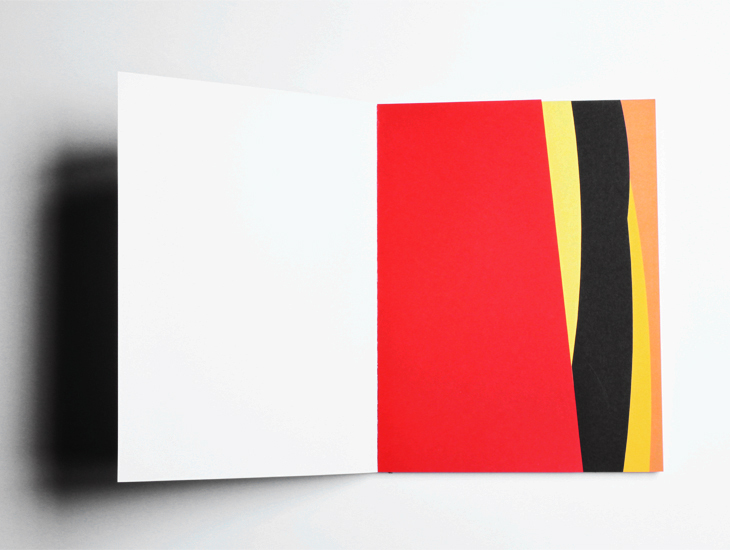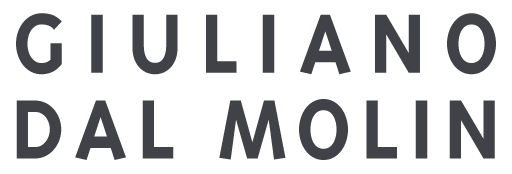
ETERNAL ACTIVITY WITHOUT ACTION
All kinds of haste,
albeit towards what is good,
betrays some mental disorder.
Objects are projections of desire,
images of a battle.
Works of art do not change
based upon who purveys them.
Works of art contain
A precise meaning.
No matter who they are aimed at.
I often meet Giuliano’s eyes.
They look inside you, silent and desperate, like his way of moving forward, his entering in a room, his work.
You don’t notice, you turn around and find him looking at you.
At the start, almost not disturbing you. Until it does disturb you.
Giuliano works in San Vito di Leguzzano in province of Vicenza
It is a small town on the state road leading to Schio, on this crest of the world that has been pollinated (riddled?) by hundreds of small and medium-sized factories, drastically changing its human and environmental morphology. The landscape has become an immense hive, with irregular and disconnected features whose common element is desolation.
On this road that splits the green dorsal kidneys that are grafted like a foreign body, lives, precisely, Dal Molin.
Just fifty metres inside the state road.
But this is already enough, in part.
He built his studio there. He built his island there.
Giuliano moves with the air of a poet.
He collects daily fragments, urges left by the passing of the seconds, broken hairs on the pillow of the night, dust on the memories, tilted words, smiles broken by breathlessness, pennies of life, hazelnuts smoothed in the pocket to bring luck.
But not just this. He collects suffering.
Giuliano seeks in everyday life his syllables, the “confused words” that he folds into his elements.
An everyday life that is disorder, drama, living struggle.
An everyday life that recalls the challenges of the poetic twentieth-century.
An everyday life without a future.
An everyday life that starts from an axiom: There is no suffering limit.
His attempt is always in vain, always repeated to give an order, to contain the chaos, to deafen the outside noise.
And his is a failed attempt.
Which doesn’t find a response.
Which is mocked by the progress of history.
But Dal Molin goes on.
He blocks his and our everyday life and sublimates it.
In his continuous levels of development. Levels. How many levels slide on top of one another: the shape, the light, the colour. But not just this; the internal environment, memory – consciousness – spirit, like the external environment, urban and television, technical and relational.
And he is ready to sculpt them, to find them a new position and a new dimension. A new space. A physical closeness. A contact. An intimacy. It is slow work of stratification, which he carries out on a hard wooden core, coated with pigment and microscopic glass spheres.
And it is a continuous and meticulous job.
Dal Molin is conscientious and ordered.
Rigorous to the point of mania; he premeditates his acts for some time, and controls them, scientifically.
If the object is always a symbolic form, the projection of the symbol does not begin with the projection on an occasional screen: the reality of the symbol is the whole reality of the object and not just its superficial appearance.
A work is finished when it can no longer be improved, even if you know that it is insufficient and incomplete. You are so exasperated by it that you no longer have the courage to add a comma, even if it is essential. What determines the level of completeness of a work is not at all a need for art or truth, it is tiredness and, even more so, disgust.
Dal Molin’s work apparently seems to be innocuous and tranquil.
It is down to its decorative-furnishing role that it is not displeasing to a museum or a gallery just like a private home. It is down to its apparent reference to intervention methods of some artists dear to him and now absorbed. But his work is anything but predicable or innocuous.
It is anything but pop.
Beneath it, there is a lengthy telluric movement.
An apparently flat and safe surface hides pitfalls and deceptions that are created and materialise with light. Continuous eruptions, offensive movements of form, which reason on a rooted primitive image to find a primary and unique codification.
The silence becomes so disquieting.
It conceals a fallacious world, which sees cracks and instabilities in its stability.
Dal Molin interprets a reality that is broken, split, wet by confusion, with which he contrasts islands, monads, closed-open structures.
And Dal Molin contains therein his anger with the world. And it is a desperate anger that can find no other solution except colour and shape to explain what has no explanation.
Translating into an image iridescent transience. A wall whose plaster has flourished and is now ready to be flaked off. Because as long as you live on this side of terrible, you will find words to express it, as soon as you know it from the inside, nobody can find them anymore.
HUNTING FOR WORDS IN THE STUDIO
San Vito di Leguzzano 20 April 2004
This is not an interview. I simply invited Giuliano Dal Molin to explain his work by points so as to proceed with the reaction of a meagre and synthetic lyricist. A sort of simple dictionary that facilitates the interpretation of his path. (C.S.)
I still don’t know if it is sculpture or painting. I deliberately do not pigeonhole my work. I am interested in this double meaning of the work, the ambiguity between form and painting, even when the work is on the wall. Mine is a need to find a dimension, lateral with respect to sculpture, full relief, to create a work that goes beyond the very idea of sculpture, using elements of shape and colour.
I feel colour is the life of the work. After a long monochrome period, I came back to life, almost shouting out the work with colour. My colours are intense, full and evident. Everyone has their own vision and autonomy. The work is created with its colour: it is the work itself that self-determines it. That’s the way it is, full stop. And I have no interest in colour theories.
Being an artist is a primary and irrepressible need for me.
I have an aversion to geometry, calculation and mathematics; in short, for all those elements of design. Geometry is a means: a design element. I have no intention of defining the work geometrically, calculating it, giving it a mathematical balance. I use it only because it gives me a synthesis of form-surface-space.
I have an obsession with an idea, the need to finish it, to bridge the gap until the very end.
The work does not end with the design. It continues with a progression that leads me to develop the form even during the execution, following the internal will of the work itself.
The idea of perfection or apparent perfection is a consequence of the need to establish order, order in life. I need to bridge a gap, to create a space for the spirit.
In my studio, I feel alive. I am completely there. A thought that makes me feel physically and mentally inside the work. Outside… I am out of place.
I have a strange relationship with things; I can never relax.
Being aware of things. This is consciousness. Honesty and truthfulness with oneself. Coherence. Not cheating. I cannot fake it with myself. I cannot work if I can’t find a reason.
Sometimes I feel caged.
Space is a challenge that generates the form. It suggests infinite possibilities of form that sometimes become a dream, or volume, or colour. I feel the need to escape a closed scheme of form to be and work with space.
I have an obsession with fixed points that repeat themselves infinitely. My work is apparently repetitive, but they are just dimensions that repeat themselves or the perimeter that reproduces itself. The work is dictated by the space and the multiplication of the form is free and always positive.
The aim is not the formula but the work.
I have a need bordering on mania.
I am very interested in small accidents in the work… they create new possibilities for my path to develop.
